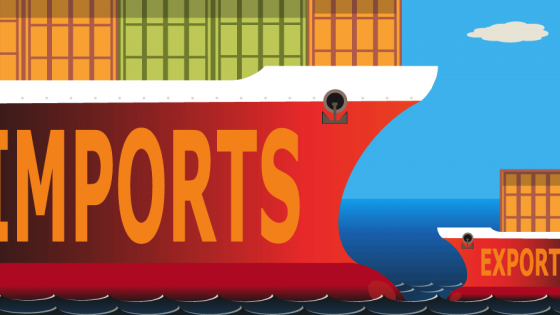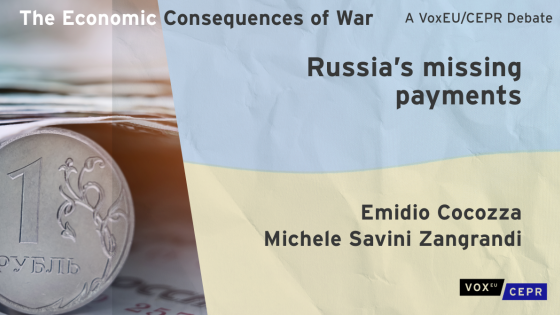In May 2017, Donald Trump tweeted: "We have a MASSIVE trade deficit with Germany, plus they pay FAR LESS than they should on NATO and military. Very bad for U.S. This will change".
In, April 2018, in reference to the trade war with China, the then-president tweeted: "When you are already dollars 500 Billion DOWN, you can't lose!"
In December 2018, Trump wrote: "I am a Tariff Man. When people or countries come in to raid the great wealth of our Nation, I want them to pay for the privilege of doing so. It will always be the best way to max out our economic power. We are right now taking in $ billions in Tariffs. MAKE AMERICA RICH AGAIN".
These tweets point to trade imbalances as a potential origin of trade tensions. Should we take these tweets seriously, or should we think that they simply reflect the specific circumstances of the Trump presidency, now behind us?
Economists have focused their interest in quantifying the consequences of recent protectionist tensions. Their verdict is clearly negative. For example, Amiti et al. (2019) and Fajgelbaum et al. (2020) explore the impact of such tensions on prices and welfare. Erceg et al. (2018) investigate the impact of such measures in a neo-Keynesian model. Most believe that tariffs and trade policies have very little effect on multilateral trade imbalances, which are traced to macroeconomic movements in saving and investment. This is confirmed in a small open economy model by Barattieri et al. (2018) and verified empirically by Furceri et al. (2018).
In our recent work (Delpeuch et al. 2021), we analyse empirically the causes of the recent rise of protectionism and test the Trump tweets by focusing on the role of bilateral and multilateral trade imbalances. The following two figures illustrate and motivate our analysis. They are based on the Global Trade Alert (GTA) database, which provides rich information on bilateral protectionist interventions from 2009 onwards (Evenett and Fritz 2020). Figure 1 shows the evolution of the number of state acts announcing tariff increases. It suggests that the rise in protectionist attacks by the US preceded the Trump presidency. Figure 2 shows the simple correlation between the number of tariff increases announced by the US and the bilateral trade deficit (as a share of US GDP and smoothed on the past five years) between the US and a given country. It suggests that countries with a larger bilateral surplus (as a share of US GDP) were targeted more aggressively by the US, with China as a clear outlier.
Figure 1 State acts announcing or implementing tariff increases
Figure 2 Correlation between the number of tariff increases announced by the US in 2017 and the bilateral trade balance
Bilateral and multilateral trade imbalances as robust predictors of protectionist attacks
Our econometric analysis shows that both bilateral and multilateral trade imbalances are robust predictors of protectionist attacks. This is not only the case for the US – although it is stronger for the US than for other countries. This was also the case before the Trump presidency and our results suggest that trade imbalances will continue to be a source of trade tensions post-Trump.
To our knowledge, ours is the first paper to provide robust evidence on this relation. This result should be of interest for both trade economists and macroeconomists. The fact that multilateral trade imbalances cause protectionist attacks suggests that global imbalances are not only a concern because of macroeconomic reasons, but also because of the trade tensions they can generate. As for bilateral imbalances, they are largely absent of macroeconomic analyses. We show that they can lead to protectionist attacks with their own macroeconomic impact. We believe that they should be studied more frequently in macroeconomic research. As for trade economists interested in the rise of protectionism, our results point to the macroeconomic origins of the issue.
Fiscal expansion, fiscal austerity, and the rise of protectionism
We also study the role of fiscal policies in the rise of protectionism. It has long been recognised that the fiscal stance of countries can drive trade imbalances. This is, for example, the position of the IMF (see World Economic Outlook 2020) which points to the tight fiscal policy in Germany as a contributor to its large trade surplus or the expansionary fiscal stance of the US as a factor of its trade deficit. This is the ‘twin deficit’ result that the ‘Mundell-Fleming’ model and the ‘New Open Economy Macroeconomics’ would generate.
Several empirical papers provide evidence on the role of fiscal policy in trade imbalances (Monacelli and Perotti (2010), Bluedorn and Leigh (2011), Bussiere et al. 2010). To strengthen our argument on the causal impact of trade imbalances on protectionism, we therefore use the budget balance of a country as an instrument for its multilateral trade balance. As for bilateral trade imbalances between two countries, we use the difference in budget balances between the two, discounted by bilateral distance. This is also consistent with recent research which points to the interaction of macroeconomic factors and ‘gravity equation’ type factors as crucial drivers of both bilateral and aggregate trade balances (Eugster et al. 2019, Cuñat and Zymek 2020). Our results on the impact of bilateral and multilateral trade imbalances are robust to this instrumental variable strategy.
The reduced-form finding – that country-pairs with very large differences in fiscal policies are more prone to protectionist tensions – is also interesting. For instance, our results suggest that in the case of the US and Germany (and more generally the EU), the difference in fiscal policy between the two countries may at least partly be at the origin (through its impact on bilateral trade balances) of the protectionist attacks of the US.
Collateral damage in the EU
We also uncover what we call a ‘collateral damage’ or insurance mechanism in the case of the EU. This is presumably because of the common trade policy. EU countries with larger (smaller) trade bilateral balances are less (more) attacked than what would be predicted if they were not in the EU. Hence, Germany – with its large bilateral trade surplus with the US – is less attacked than if it were outside the EU. In addition, past protectionist attacks and bilateral exchange rate depreciations also predict which countries will be targeted by protectionist measures.
The quantitative impact of trade imbalances on the rise of protectionism is sizable for G20 countries: an increase of one standard deviation of the bilateral trade balance between two countries corresponds to a 7.3% increase in protectionist intervention between the two countries. A deterioration of one standard deviation of the multilateral trade balance of a country leads to a 16.6% increase in the protectionist attacks of this country.
Our results suggest that if globalisation, both in its trade and financial dimension, has generated more bilateral and multilateral trade imbalances, then it may also generate protectionist forces that may endogenously put a brake to globalization. Trade imbalances are also often seen as a source of concern because of their macroeconomic consequences in particular in terms of either foreign debt accumulation or demand deficit. Our results suggest that they have a further potential negative impact in aggravating trade tensions.
A transatlantic gap in the fiscal response to Covid-19 and potential renewed trade tensions
Finally, international cooperation in macroeconomic policies (especially fiscal policies) has been viewed as important to reduce the possibility of a free-rider problem. This problem would be present where countries with more restrictive fiscal policies (and larger trade surpluses) reduce global demand but benefit from other countries’ expansionary fiscal policies. For example, this is a criticism addressed at some EU countries by the US. The fiscal stimulus in reaction to the Covid-19 crisis is likely to be larger in the US than in the EU or China, and our results show that countries that act as ‘consumers’ of last resort through their fiscal policy (and incur trade deficits as a consequence) do indeed retaliate via subsequent protectionist actions. Hence, our analysis suggests that protectionist tensions that find their origin in macroeconomic imbalances will not disappear with the end of the Trump presidency, as many of these factors will outlast the 45th president substantially.
References
Amiti, M, S J Redding and D Weinstein (2019), “The Impact of the 2018 Trade War on U.S. Prices and Welfare”, NBER Technical Report.
Barattieri, A, M Cacciatore and F Ghironi (2018), “Protectionism and the Business Cycle”, NBER Working Paper 24353.
Bluedorn, J and D Leigh (2011), “Revisiting the Twin Deficits Hypothesis: The Effect of Fiscal Consolidation on the Current Account”, IMF Economic Review 11(59): 582–602.
Bussiere, M, M Fratzscher and G J Muller (2010), “Productivity shocks, budget deficits and the current account”, Journal of International Money and Finance 29 (8): 1562 – 1579.
Cuñat, A and R Zymek (2020), “Hidden causes and hidden effects: Bilateral trade imbalances” , VoxEU.org, 17 February.
Delpeuch, S, E Fize and P Martin (2021), “Trade imbalances and the Rise of Protectionism”, CEPR Discussion Paper 15742.
Erceg, C, A Prestipino and A Raffo (2018), “The Macroeconomic Effects of Trade Policy”, International Finance Discussion Papers 1242, Technical Report.
Eugster, J, F Jaumotte, M MacDonald and R Piazza (2019), "Bilateral and aggregate trade balances: Finding the right focus”, VoxEU.org, 10 September.
Evenett, S J and J Fritz (2020), “The Global Trade Alert database handbook”, manuscript, 14 July.
Fajgelbaum, P, P Goldberg, P Kennedy and A Khandelwal (2020), “The Return to Protectionism”, Quarterly Journal of Economics 135 (1): 1–55.
Furceri, D, A H Swarnali, J D Ostry and A K Rose (2018), “Macroeconomic Consequences of Tariffs”, NBER Technical Report 25402
IMF (2020), World Economic Outlook, October.
Monacelli, T and R Perotti (2010), “Fiscal Policy, the real exchange rate and traded goods”, The Economic Journal 120(544): 437–461.








